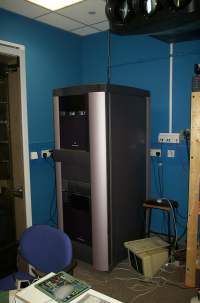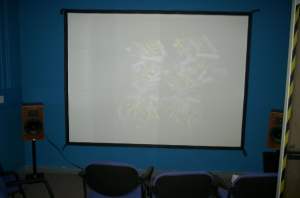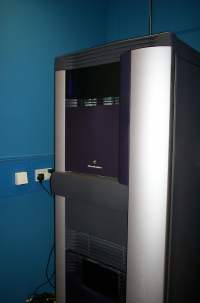 |

|
 |
Disclaimer: Use at your own risk.
1) How to enable Quad Buffered Open GL
Stereo in a Window on any NVIDIA GeForce card. This how to explains how to patch the standard NVIDIA reference
drivers for Windows 2000 or Windows XP to convert any NVIDIA GeForce card (GeForce,
GeForce DDR, GeForce2, GeForce2 MX, GeForce3) so that it supports Quad Buffered
Stereo in a window. NVIDIA make 2 types of graphics chips, they make the
expensive professional versions such as the Quadro series and then they make
cheaper and supposedly less functional games orientated cards such as the
GeForce3 series. In truth the chips used on these cards are identical. Yes, a
£750 professional card has an identical graphics rendering engine as a £250
GeForce3. The difference is purely in software, NVIDIA's drivers simply look at
the ID the card reports and then if it is a cheaper games orientated version
disables the more advanced options like Quad Buffered Stereo and Line
antialiasing. Thus it is a fairly simple procedure to patch the drivers to
support convert the card into it's more expensive professional cousin. No
hardware modification needs to be made and thus your warranty is not effected. I have tested this with an Elsa Gladiac GeForce2 GTS 32MB and an
Asus GeForce3 Deluxe 64MB with both the Elsa Revelator Glasses and the Asus
Glasses that come with their Deluxe cards. This method gives glorious 3D stereo
in all programs that inherently support it. Two examples I have tried are
Visual Molecular Dynamics VMD v1.7 (http://www.ks.uiuc.edu/Research/vmd/)
and with 3Space Assistant v3.6 Trial (http://www.tgs.com/).
2) How to convert a £250,000 SGI Onyx 2 Stereo Visualisation System using Crystal Eyes Glasses to Work with a £1500 PC.
In my work I am lucky to have almost exclusive access to a professional stereo visualisation suite. This system uses an SGI Onyx 2 connected to a Trimension triple tube RGB projector and a crystal eyes infra red stereo system. Having modified a new PC so that our computational chemistry visualisation could be done on cheap PC's the next step was to make a converter so that the stereo out of the PC could be fed through the Trimension projector and the Crystal Eyes Emitter so that we could make use of our existing infrastructure. Total cost for conversion = £45, Result = Glorious life size stereo imaging of chemical systems, By product = Life size stereo Counter Strike :-).
Last Updated: 14/05/2008